Haotian Xu
Search Self-play: Pushing the Frontier of Agent Capability without Supervision
Oct 21, 2025Abstract:Reinforcement learning with verifiable rewards (RLVR) has become the mainstream technique for training LLM agents. However, RLVR highly depends on well-crafted task queries and corresponding ground-truth answers to provide accurate rewards, which requires massive human efforts and hinders the RL scaling processes, especially under agentic scenarios. Although a few recent works explore task synthesis methods, the difficulty of generated agentic tasks can hardly be controlled to provide effective RL training advantages. To achieve agentic RLVR with higher scalability, we explore self-play training for deep search agents, in which the learning LLM utilizes multi-turn search engine calling and acts simultaneously as both a task proposer and a problem solver. The task proposer aims to generate deep search queries with well-defined ground-truth answers and increasing task difficulty. The problem solver tries to handle the generated search queries and output the correct answer predictions. To ensure that each generated search query has accurate ground truth, we collect all the searching results from the proposer's trajectory as external knowledge, then conduct retrieval-augmentation generation (RAG) to test whether the proposed query can be correctly answered with all necessary search documents provided. In this search self-play (SSP) game, the proposer and the solver co-evolve their agent capabilities through both competition and cooperation. With substantial experimental results, we find that SSP can significantly improve search agents' performance uniformly on various benchmarks without any supervision under both from-scratch and continuous RL training setups. The code is at https://github.com/Alibaba-Quark/SSP.
LiteLong: Resource-Efficient Long-Context Data Synthesis for LLMs
Sep 19, 2025

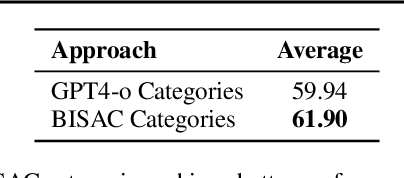

Abstract:High-quality long-context data is essential for training large language models (LLMs) capable of processing extensive documents, yet existing synthesis approaches using relevance-based aggregation face challenges of computational efficiency. We present LiteLong, a resource-efficient method for synthesizing long-context data through structured topic organization and multi-agent debate. Our approach leverages the BISAC book classification system to provide a comprehensive hierarchical topic organization, and then employs a debate mechanism with multiple LLMs to generate diverse, high-quality topics within this structure. For each topic, we use lightweight BM25 retrieval to obtain relevant documents and concatenate them into 128K-token training samples. Experiments on HELMET and Ruler benchmarks demonstrate that LiteLong achieves competitive long-context performance and can seamlessly integrate with other long-dependency enhancement methods. LiteLong makes high-quality long-context data synthesis more accessible by reducing both computational and data engineering costs, facilitating further research in long-context language training.
Graph Concept Bottleneck Models
Aug 19, 2025Abstract:Concept Bottleneck Models (CBMs) provide explicit interpretations for deep neural networks through concepts and allow intervention with concepts to adjust final predictions. Existing CBMs assume concepts are conditionally independent given labels and isolated from each other, ignoring the hidden relationships among concepts. However, the set of concepts in CBMs often has an intrinsic structure where concepts are generally correlated: changing one concept will inherently impact its related concepts. To mitigate this limitation, we propose GraphCBMs: a new variant of CBM that facilitates concept relationships by constructing latent concept graphs, which can be combined with CBMs to enhance model performance while retaining their interpretability. Our experiment results on real-world image classification tasks demonstrate Graph CBMs offer the following benefits: (1) superior in image classification tasks while providing more concept structure information for interpretability; (2) able to utilize latent concept graphs for more effective interventions; and (3) robust in performance across different training and architecture settings.
MedKGent: A Large Language Model Agent Framework for Constructing Temporally Evolving Medical Knowledge Graph
Aug 17, 2025Abstract:The rapid expansion of medical literature presents growing challenges for structuring and integrating domain knowledge at scale. Knowledge Graphs (KGs) offer a promising solution by enabling efficient retrieval, automated reasoning, and knowledge discovery. However, current KG construction methods often rely on supervised pipelines with limited generalizability or naively aggregate outputs from Large Language Models (LLMs), treating biomedical corpora as static and ignoring the temporal dynamics and contextual uncertainty of evolving knowledge. To address these limitations, we introduce MedKGent, a LLM agent framework for constructing temporally evolving medical KGs. Leveraging over 10 million PubMed abstracts published between 1975 and 2023, we simulate the emergence of biomedical knowledge via a fine-grained daily time series. MedKGent incrementally builds the KG in a day-by-day manner using two specialized agents powered by the Qwen2.5-32B-Instruct model. The Extractor Agent identifies knowledge triples and assigns confidence scores via sampling-based estimation, which are used to filter low-confidence extractions and inform downstream processing. The Constructor Agent incrementally integrates the retained triples into a temporally evolving graph, guided by confidence scores and timestamps to reinforce recurring knowledge and resolve conflicts. The resulting KG contains 156,275 entities and 2,971,384 relational triples. Quality assessments by two SOTA LLMs and three domain experts demonstrate an accuracy approaching 90\%, with strong inter-rater agreement. To evaluate downstream utility, we conduct RAG across seven medical question answering benchmarks using five leading LLMs, consistently observing significant improvements over non-augmented baselines. Case studies further demonstrate the KG's value in literature-based drug repurposing via confidence-aware causal inference.
Omni-DPO: A Dual-Perspective Paradigm for Dynamic Preference Learning of LLMs
Jun 11, 2025Abstract:Direct Preference Optimization (DPO) has become a cornerstone of reinforcement learning from human feedback (RLHF) due to its simplicity and efficiency. However, existing DPO-based approaches typically treat all preference pairs uniformly, ignoring critical variations in their inherent quality and learning utility, leading to suboptimal data utilization and performance. To address this challenge, we propose Omni-DPO, a dual-perspective optimization framework that jointly accounts for (1) the inherent quality of each preference pair and (2) the model's evolving performance on those pairs. By adaptively weighting samples according to both data quality and the model's learning dynamics during training, Omni-DPO enables more effective training data utilization and achieves better performance. Experimental results on various models and benchmarks demonstrate the superiority and generalization capabilities of Omni-DPO. On textual understanding tasks, Gemma-2-9b-it finetuned with Omni-DPO beats the leading LLM, Claude 3 Opus, by a significant margin of 6.7 points on the Arena-Hard benchmark. On mathematical reasoning tasks, Omni-DPO consistently outperforms the baseline methods across all benchmarks, providing strong empirical evidence for the effectiveness and robustness of our approach. Code and models will be available at https://github.com/pspdada/Omni-DPO.
Agent RL Scaling Law: Agent RL with Spontaneous Code Execution for Mathematical Problem Solving
May 14, 2025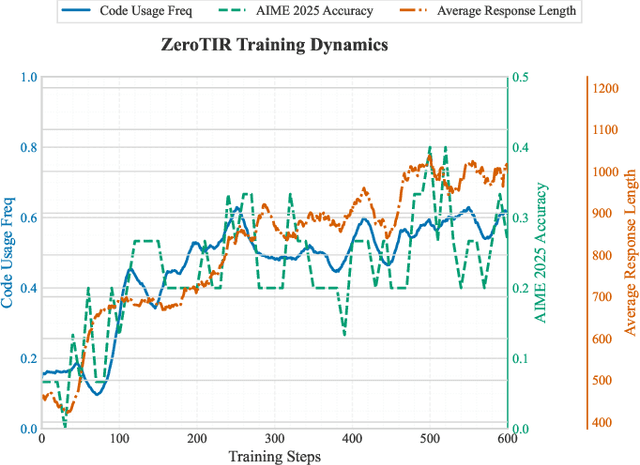

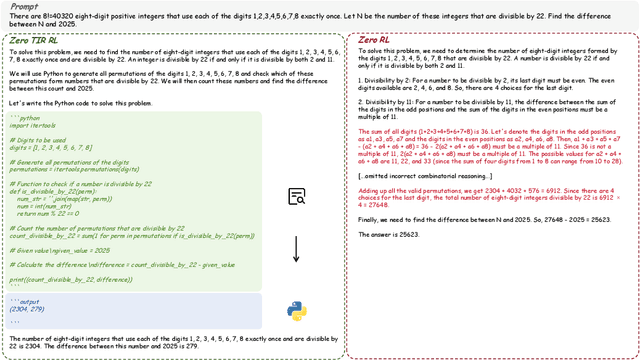
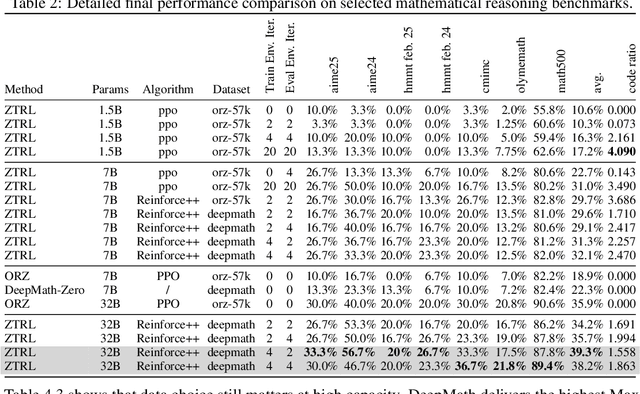
Abstract:Large Language Models (LLMs) often struggle with mathematical reasoning tasks requiring precise, verifiable computation. While Reinforcement Learning (RL) from outcome-based rewards enhances text-based reasoning, understanding how agents autonomously learn to leverage external tools like code execution remains crucial. We investigate RL from outcome-based rewards for Tool-Integrated Reasoning, ZeroTIR, training base LLMs to spontaneously generate and execute Python code for mathematical problems without supervised tool-use examples. Our central contribution is we demonstrate that as RL training progresses, key metrics scale predictably. Specifically, we observe strong positive correlations where increased training steps lead to increases in the spontaneous code execution frequency, the average response length, and, critically, the final task accuracy. This suggests a quantifiable relationship between computational effort invested in training and the emergence of effective, tool-augmented reasoning strategies. We implement a robust framework featuring a decoupled code execution environment and validate our findings across standard RL algorithms and frameworks. Experiments show ZeroTIR significantly surpasses non-tool ZeroRL baselines on challenging math benchmarks. Our findings provide a foundational understanding of how autonomous tool use is acquired and scales within Agent RL, offering a reproducible benchmark for future studies. Code is released at \href{https://github.com/yyht/openrlhf_async_pipline}{https://github.com/yyht/openrlhf\_async\_pipline}.
GeoNav: Empowering MLLMs with Explicit Geospatial Reasoning Abilities for Language-Goal Aerial Navigation
Apr 13, 2025Abstract:Language-goal aerial navigation is a critical challenge in embodied AI, requiring UAVs to localize targets in complex environments such as urban blocks based on textual specification. Existing methods, often adapted from indoor navigation, struggle to scale due to limited field of view, semantic ambiguity among objects, and lack of structured spatial reasoning. In this work, we propose GeoNav, a geospatially aware multimodal agent to enable long-range navigation. GeoNav operates in three phases-landmark navigation, target search, and precise localization-mimicking human coarse-to-fine spatial strategies. To support such reasoning, it dynamically builds two different types of spatial memory. The first is a global but schematic cognitive map, which fuses prior textual geographic knowledge and embodied visual cues into a top-down, annotated form for fast navigation to the landmark region. The second is a local but delicate scene graph representing hierarchical spatial relationships between blocks, landmarks, and objects, which is used for definite target localization. On top of this structured representation, GeoNav employs a spatially aware, multimodal chain-of-thought prompting mechanism to enable multimodal large language models with efficient and interpretable decision-making across stages. On the CityNav urban navigation benchmark, GeoNav surpasses the current state-of-the-art by up to 12.53% in success rate and significantly improves navigation efficiency, even in hard-level tasks. Ablation studies highlight the importance of each module, showcasing how geospatial representations and coarse-to-fine reasoning enhance UAV navigation.
Probabilistic Uncertain Reward Model: A Natural Generalization of Bradley-Terry Reward Model
Mar 28, 2025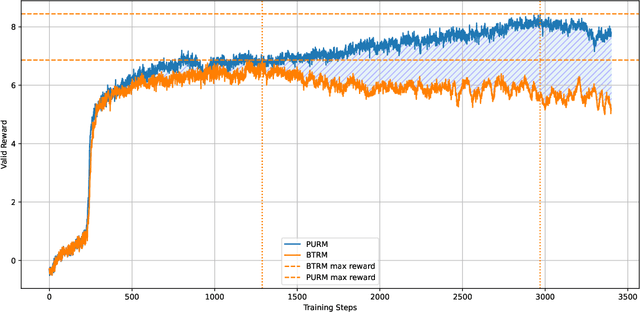
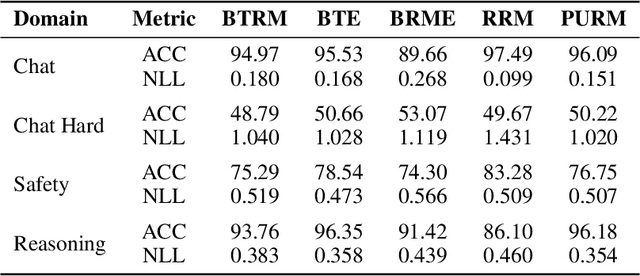
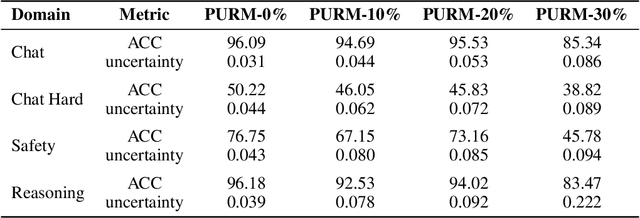
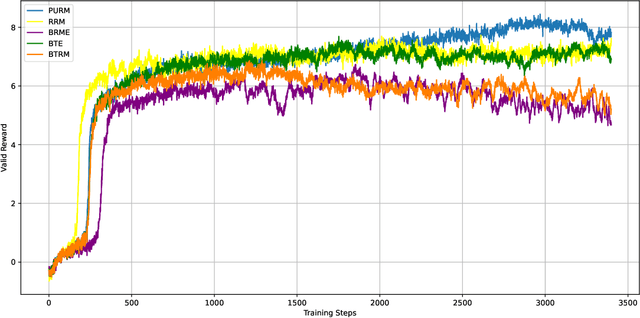
Abstract:Reinforcement Learning from Human Feedback (RLHF) has emerged as a critical technique for training large language models. However, reward hacking-a phenomenon where models exploit flaws in the reward model-remains a significant barrier to achieving robust and scalable intelligence through long-term training. Existing studies have proposed uncertain reward model to address reward hacking, however, they often lack systematic or theoretical foundations, failing to model the uncertainty intrinsically emerging from preference data. In this paper, we propose the Probabilistic Uncertain Reward Model (PURM), a natural generalization of the classical Bradley-Terry reward model. PURM learns reward distributions directly from preference data and quantifies per-sample uncertainty via the average overlap area between reward distributions. To mitigate reward hacking, we further introduce an uncertainty-aware penalty into Proximal Policy Optimization (PPO), which leverages the learned uncertainty to dynamically balance reward optimization and exploration. We propose a lightweight and easy-to-use implementation of PURM. Experiments demonstrate that PURM significantly delays the onset of reward hacking while improving final reward performance, outperforming baseline methods in both stability and effectiveness.
JPDS-NN: Reinforcement Learning-Based Dynamic Task Allocation for Agricultural Vehicle Routing Optimization
Mar 04, 2025Abstract:The Entrance Dependent Vehicle Routing Problem (EDVRP) is a variant of the Vehicle Routing Problem (VRP) where the scale of cities influences routing outcomes, necessitating consideration of their entrances. This paper addresses EDVRP in agriculture, focusing on multi-parameter vehicle planning for irregularly shaped fields. To address the limitations of traditional methods, such as heuristic approaches, which often overlook field geometry and entrance constraints, we propose a Joint Probability Distribution Sampling Neural Network (JPDS-NN) to effectively solve the EDVRP. The network uses an encoder-decoder architecture with graph transformers and attention mechanisms to model routing as a Markov Decision Process, and is trained via reinforcement learning for efficient and rapid end-to-end planning. Experimental results indicate that JPDS-NN reduces travel distances by 48.4-65.4%, lowers fuel consumption by 14.0-17.6%, and computes two orders of magnitude faster than baseline methods, while demonstrating 15-25% superior performance in dynamic arrangement scenarios. Ablation studies validate the necessity of cross-attention and pre-training. The framework enables scalable, intelligent routing for large-scale farming under dynamic constraints.
Ordered Genetic Algorithm for Entrance Dependent Vehicle Routing Problem in Farms
Feb 26, 2025Abstract:Vehicle Routing Problems (VRP) are widely studied issues that play important roles in many production scenarios. We have noticed that in some practical scenarios of VRP, the size of cities and their entrances can significantly influence the optimization process. To address this, we have constructed the Entrance Dependent VRP (EDVRP) to describe such problems. We provide a mathematical formulation for the EDVRP in farms and propose an Ordered Genetic Algorithm (OGA) to solve it. The effectiveness of OGA is demonstrated through our experiments, which involve a multitude of randomly generated cases. The results indicate that OGA offers certain advantages compared to a random strategy baseline and a genetic algorithm without ordering. Furthermore, the novel operators introduced in this paper have been validated through ablation experiments, proving their effectiveness in enhancing the performance of the algorithm.
 Add to Chrome
Add to Chrome Add to Firefox
Add to Firefox Add to Edge
Add to Edge